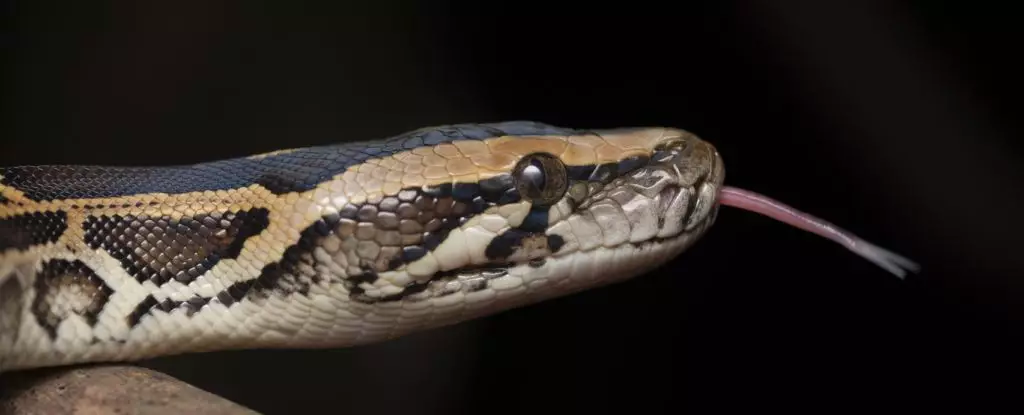In the complex tapestry of evolutionary biology, few adaptations evoke such awe as the snake’s ability to swallow prey whole—bones, flesh, and all. This remarkable feat is often romanticized, but what remains hidden is the intricate internal machinery that makes it possible. While most animals regurgitate or pass bones as waste, snakes have evolved a sophisticated system to fully digest and absorb what others cannot. As recent scientific discoveries reveal, behind this impressive capability lies an unknown class of intestinal cells that serve as biological marvels, allowing these predators to optimize every nutritional ounce from their meal.
This discovery challenges many of our preconceptions about digestion. It’s not merely a matter of a flexible jaw or slow digestion; it’s about molecular ingenuity. These specialized cells, found in Burmese pythons, fundamentally alter our understanding of how vertebrates can handle the otherwise overwhelming challenge of bone digestion. Instead of exhibiting a simple, straightforward process of breaking down bones, snakes have evolved a cellular architecture so advanced it suggests a level of biological ingenuity we are just beginning to comprehend. This intricacy underscores not only the evolutionary success of snakes but also raises questions about the potential evolutionary pressures that spurred such complex adaptations.
Redefining Nutritional Boundaries and Evolutionary Limits
What makes these findings so compelling is their broader implication: evolution often favors solutions that double as innovations. The discovery of these unknown cells underscores a design that elegantly balances calcium and phosphorus intake—elements critical yet potentially toxic if mishandled. This cellular specialization allows snakes to extract maximum nutrients from bones, satisfying their dietary requirements without risking mineral overload. Moreover, the fact that these cells are also present in the Gila monster hints at a shared evolutionary solution, possibly inherited from a common ancestor, or developed independently through convergent evolution.
The study invites skepticism about how specialized and refined digestion can become. It seems almost paradoxical—how a creature can, without a dedicated bone-eating behavior, develop such a precise and efficient mechanism? This revelation pushes us to reconsider the adaptive potential hidden within other seemingly mundane organisms. It’s a humbling reminder that nature’s diversity of solutions often surpasses human technological ambition. The fact that other marine and terrestrial animals might possess similar unseen mechanisms lends weight to the idea that evolution continually crafts microscopic marvels in the shadows of our ignorance.
Implications Beyond the Snake’s Realm
The significance of this discovery extends beyond biology into fields like medicine, ecology, and even biomimicry. Understanding these novel cells invites us to explore new avenues for treating calcium and phosphorus imbalances in humans. Could these biological principles inspire new therapies or dietary management strategies? It’s difficult to ignore the potential for applying such knowledge in medical science, given how vital mineral regulation is to overall health.
Ecologically, this discovery underscores the importance of dietary adaptations for survival in predator-prey dynamics. It emphasizes that even seemingly simple behaviors—like eating bones—are underpinned by complex cellular evolution. Recognizing this complexity compels us to rethink conservation strategies, understanding that preserving such species involves maintaining these delicate cellular adaptations that allow them to thrive in their ecological niches.
Critically, this revelation also raises ethical questions about our perception of the natural order. As humans, we often judge animals based on our limited understanding. Yet, nature demonstrates time and again that survival is intertwined with cellular innovation, technical mastery, and silent adaptation. Instead of viewing snakes’ bone-eating capacity as grotesque or primitive, we should appreciate it as a testament to the resilience and ingenuity of life itself. Recognizing these biological feats invites a more humble, respectful stance in our interactions with the natural world, urging us to protect the myriad forms of life that harbor secrets we have only begun to uncover.

Leave a Reply